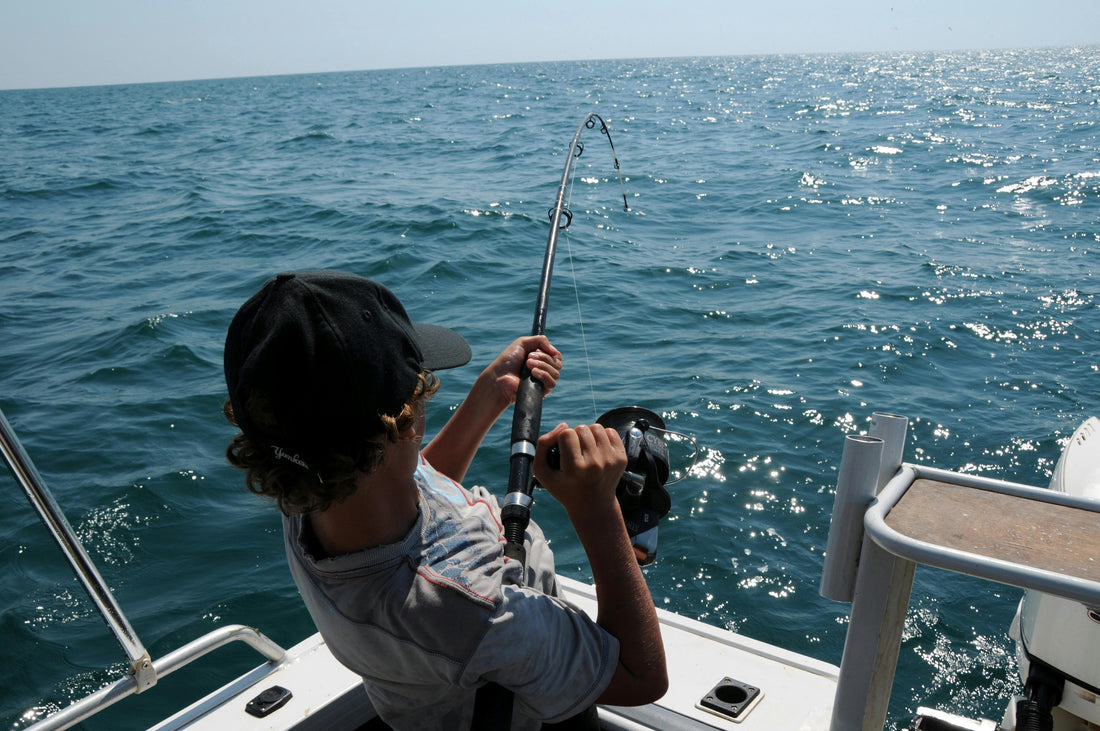
Elite Jigging Knowledge: A Deep Dive for Beginners and Serious Anglers
Share

Jigging is often misunderstood as a simple up-and-down motion. But at the professional level, it becomes an art—a calculated, dynamic, and highly technical system that adapts to underwater structure, fish behavior, tidal flow, and even boat drift. In this advanced guide, we break down true pro-level insights shared by expert jigging anglers like Norihiro Sato (Japan), Damon Olsen (Australia), and Yusuke Kawasaki (Thailand), teaching not just the "how," but the "why" behind elite jigging strategies. If you're new to jigging or want to evolve from average to deadly, this is your starting point.
1. Mastering Vertical Control: The Most Underrated Skill
True professionals don’t just drop jigs—they control the vertical angle down to seconds and centimeters. Fish often react based on the angle and fluttering descent of the jig. For example:
- If your line starts drifting more than 20° off vertical, your jig loses action and becomes less effective.
- Pros use slow reverse thrust or side motor correction to maintain position.
- In deeper water (100–200m), this precision becomes crucial, especially when targeting dogtooth tuna or deep amberjack.
**Case Example**: In the Coral Sea, Damon Olsen runs his drift along reef edges instead of over the reef, giving jigs time to "flirt" with the structure edge—this triggers ambush bites. Beginners often drift over the structure too fast, missing the strike zone.
2. Rod Movement: Controlled Slack is King
The action of your jig depends not on the lift—but the fall. Norihiro Sato’s slow pitch mastery is based on delivering a controlled slack line, allowing the jig to flutter horizontally. Key practices include:
- Using 1/4, 1/2, or full pitch depending on current resistance.
- Pausing at the top of the lift to allow a natural descent.
- Avoiding constant tension—tight lines ruin flutter.
**Pro Tip**: Upgrade to a rod with high rebound recovery and parabolic bend (like the Sato Sensei or Poseidon Slow Jerker). These rods are engineered to maximize slow flutter, not power.
3. Targeting Dogtooth Tuna: Precision Tactics
Dogtooth tuna are notorious for cutting lines and fighting dirty near structure. Here’s how pros land them:
- Use PE 2.5–3.0 braided line to cut through water without excess drag.
- Always stay above the fish. Once hooked, reel aggressively to avoid line contact with reef edges.
- Pros pre-map current breaks using sonar and drop jigs only where thermoclines meet bait clouds.
**Case Example**: Yusuke Kawasaki in Andaman waters uses a flutter jig with assist hooks on both ends and a 1.5-meter 100 lb fluorocarbon leader, landing a 50 kg dogtooth in 160m after three failed hook-ups. His adjustment? Switching to lighter line for better presentation and slowing down the cadence.
4. Tuning Your Rhythm to the Fish’s Mood
Fish behavior varies hourly. Pros experiment with:
- **Dead-stick pause**: Letting the jig sit still for 2–4 seconds.
- **Wiper-jig rhythm**: Mimicking a windshield wiper to entice hesitant predators.
- **Half-crank pulse**: Short mechanical jigs can be pulsed mid-water column to imitate wounded bait.
**Pro Insight**: Fish like grouper or snapper often strike not during motion but at the moment the jig falls flat or sits still. Count the seconds and feel your rod tip for "micro-pressure"—a sign of mouth contact, not full bites.

5. Smart Drift Positioning: Think Like a Sniper
Good jigging starts long before you drop the jig. Here’s how pros set up:
- Drift diagonally across structure, not directly over.
- If current runs north-south, position yourself west or east to avoid passing overhead too quickly.
- Use a sea anchor or GPS-assisted trolling to slow your pass.
**Real-World Tactic**: In the Maldives, jigging masters often "track" a bait ball from 200 meters away and deploy jigs just outside the feeding frenzy. This prevents the jig from getting lost in the chaos and mimics a straggler bait—often the one predators target.
6. Match Your Jig to Depth, Target, and Time of Day
Color and weight are not about looks—they’re tactical tools.
- Bright glow colors at night or 150m+ depth.
- Short, fat jigs for slack water (creates flutter).
- Long, knife-shaped jigs in high current for speed action.
**Expert Formula**:
- Use 200g jig for 60-90m depth with slow pitch.
- Use 300g+ jig for 120m+ depth when drifting or current exceeds 1.5 knots.
- Always test 2 jig shapes before switching color.
Final Thoughts: Your Jigging Transformation Starts Here
Jigging at the professional level is less about aggression and more about understanding underwater dynamics. Every twitch, pause, and drop has a reason. The best anglers build their knowledge over hundreds of hours of failure, observation, and adaptation. Whether you’re on your first jigging trip or your hundredth, there is always more to learn—and that’s what makes this style of fishing one of the most rewarding and addictive in the world.
